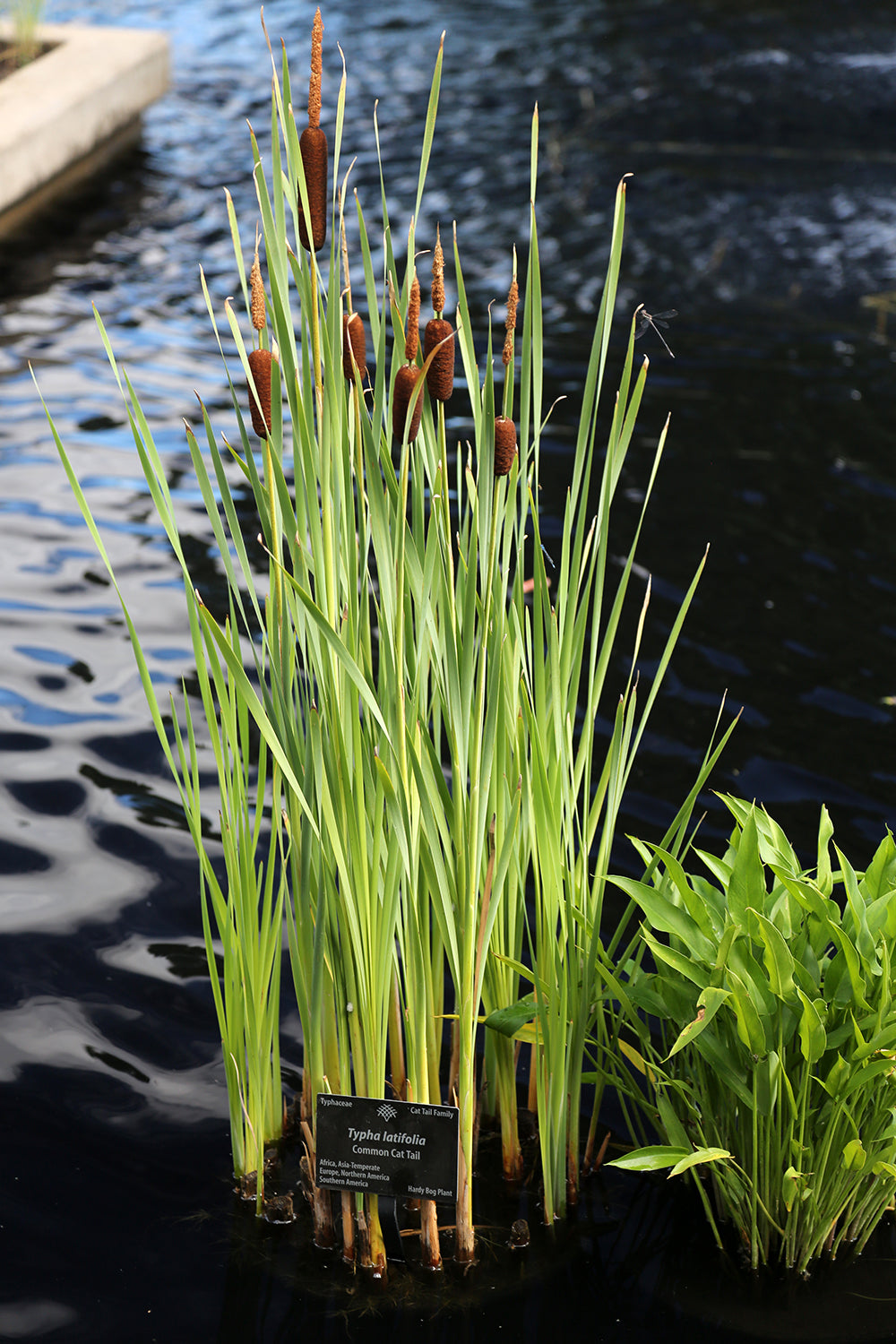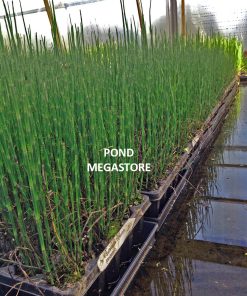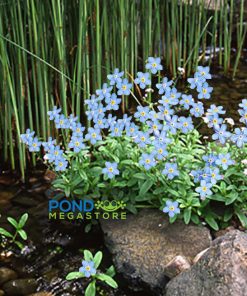Common Cattail (Typha Latifolia) Live plants! Pond Megastore
$ 8,49 $ 5,09
Common Cattails, also known as cat tails, cat tails plant, cattail plant, or bulrush, are an attractive pond plant with stalk-like,flat, green foliage and brown catkins in early to late summer. Helps with soil erosion on lake banks and banks of natural ponds. Provides cover for wildlife and can grow 4-6 feet tall, depending on conditions. One of the most common pond plants found in natural ponds, streams and marshes. Common Cattails may provide food and shelter for wild waterfowl.
Height Grows 8 – 10 feet or taller
Width 2 – 4 foot spread
Sunlight Requirements Full sun to part shade
Moisture Requirements Moist soil or shallow water
Bloom Time Blooms in summer, followed by brown catkin fruit later in season
Zone 3 – 10
Planting Instructions
Common Cattails grow well in standing water and in marshes or wetlands. Cat tails plant is great for naturalizing in areas where standing water and poor drainage are a problem. Cat tails plant tolerates occasional flooding as well as periods of drought. Plant in soil with up to 8 inches of water above the roots in full sun to part shade. Great for soil erosion on banks, (caution–roots go deep and may become invasive). Cattail plants spreads by creeping rhizome as well as self seeds. Also called cat tails, cattail plants, Cat-o-nine-tails and cattail plants. Common Cattails produce more starch per acre than any other plant and were considered being used as a crop after WWI. They produce more starch per acre than rice, potatoes, or yams.
Fun Fact Typha (TYE-pha) is the Greek word meaning ‘marsh’. Common Cattails are often found in marshes or wetlands. The word Latifolia is the Greek word for ‘leaves’.
When you consider buying cattail do note they are generally fast growing in heavy loam soil or natural ponds and lakes. They can overgrow areas and are very hard to get rid of. They are great for phytoremediation and uptaing heavy metals and contaminants in the water which is their primary funtion. Cattails are also great at preventing ponding in low lying areas which in turn keeps mosquitos from breeding in those ditches and low lying areas.
Speedy Delivery and Professional Packaging
We can offer a variety of shipping options due to our long-term relationship with UPS FedEx DHL. Our warehouse staff are highly trained and will pack the items according to our exact and precise specifications. Your products will be subjected to an extensive inspection and be securely packaged before being delivered. We ship to hundreds of thousands of customers daily across various countries. This is an indication of our determination to become the largest online retailer worldwide. Warehouses and distribution centres can be located in Europe as well as in the USA.
Orders with more than one item are assigned processing periods according to each item.
Prior to shipment, we examine the items ordered carefully before shipping. Most orders are shipped within 48 hours. It is expected that delivery will take between 3 and 7 days.
Returns
We do not manage the stock in our factory and warehouse. So the actual stock may change at any time. Please be aware that it's possible that your order will run out of stock even after you have made the order.
Our policy runs for a period of 30 days. If thirty days have passed from the date you purchased the item, we cannot provide a refund or exchange.
The item must not be used, and it must be in the original packaging. You must have the item in the original packaging.
Related products
Marginals
Marginals






















































